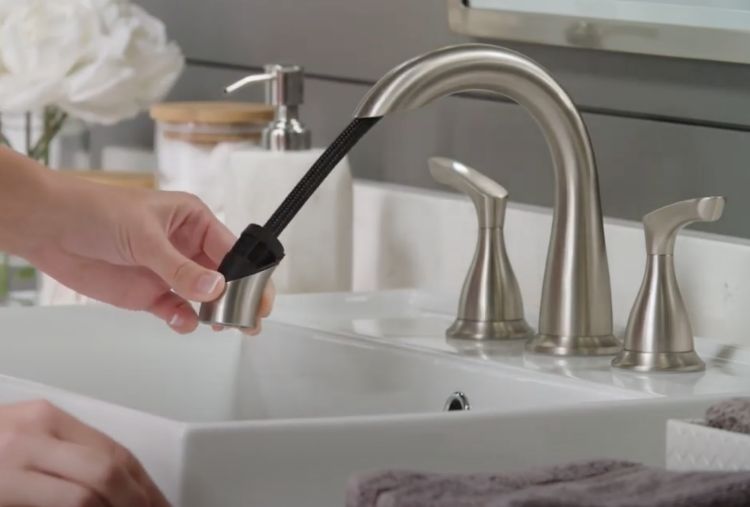They are making a number of good pointers regarding Leaky Faucets: Why They Happen & What to Do About Them overall in this great article following next.

Leaking faucets might look like a minor aggravation, yet their effect exceeds just the aggravation of the sound. From wasting water to sustaining unneeded economic costs and health dangers, neglecting a trickling faucet can bring about different effects. In this post, we'll explore why it's essential to resolve this usual household problem immediately and successfully.
Wastage of Water
Ecological Influence
Trickling faucets contribute significantly to water waste. According to the Epa (EPA), a solitary tap leaking at one drip per second can waste greater than 3,000 gallons of water per year. This not just strains water sources yet likewise influences communities and wild animals dependent on them.
Financial Prices
Increased Water Bills
Beyond the environmental effect, leaking taps can pump up water costs considerably. The collected wastefulness with time translates right into greater energy expenses, which could have been avoided with prompt fixings.
Possible Residential Or Commercial Property Damage
Moreover, prolonged trickling can cause harm to components and surface areas bordering the faucet. Water accumulation can trigger discoloration, rust, and also structural concerns if left ignored, resulting in added repair work prices.
Wellness Worries
Mold And Mildew and Mildew Development
The constant existence of dampness from a leaking tap creates an excellent environment for mold and mold growth. These fungis not just endanger interior air quality but likewise posture health risks, particularly for individuals with respiratory problems or allergic reactions.
Waterborne Diseases
Stagnant water in dripping faucets can come to be a breeding place for germs and other virus, raising the risk of waterborne illness. Impurities such as Legionella microorganisms grow in stationary water, potentially causing major diseases when ingested or inhaled.
DIY vs. Expert Repair service
Benefits and drawbacks of Do It Yourself Fixing
While some might try to deal with a dripping tap themselves, do it yourself repair services include their very own set of obstacles. Without appropriate expertise and tools, do it yourself attempts can worsen the issue or result in insufficient fixings, prolonging the issue.
Benefits of Employing a Specialist Plumber
Hiring a professional plumber makes sure that the underlying source of the trickling faucet is attended to properly. Plumbing technicians have the knowledge and devices to identify and fix tap issues effectively, saving time and lessening the danger of further damages.
Step-by-Step Overview to Dealing With a Dripping Tap
Devices Called for
Before attempting to repair a dripping faucet, collect the essential devices, consisting of a flexible wrench, screwdrivers, replacement parts (such as washing machines or cartridges), and plumber's tape.
Usual Faucet Issues and Their Solutions
Determine the type of tap and the particular issue creating the drip. Common issues include worn-out washing machines, rusty valve seats, or defective O-rings. Refer to supplier directions or online tutorials for detailed advice on repairs.
Safety nets
Routine Upkeep Tips
To prevent trickling faucets, perform routine upkeep such as cleansing aerators, evaluating for leaks, and replacing worn-out components immediately. Furthermore, think about mounting water-saving tools or upgrading to much more efficient fixtures.
Importance of Prompt Repair Works
Dealing with leaking taps as soon as they're observed prevents more water wastage and possible damages, ultimately saving both water and money in the future.
Impact on Property Worth
Perception of Well-Maintained Home
Preserving a property in good condition, including dealing with maintenance problems like leaking faucets, boosts its viewed value and worth amongst potential customers or occupants.
Influence on Resale Value
Features with properly maintained plumbing fixtures, including faucets, command higher resale worths in the real estate market. Addressing dripping taps can add to a positive impression throughout home examinations and arrangements.
Ecological Duty
Individual Payment to Preservation
Taking responsibility for repairing leaking faucets lines up with more comprehensive initiatives towards water preservation and environmental sustainability. Every individual's actions collectively make a considerable effect on preserving precious resources.
Sustainable Living Practices
By focusing on punctual fixings and taking on water-saving practices, individuals contribute to sustainable living techniques that profit both present and future generations.
Final thought
Addressing a dripping tap surpasses plain comfort; it's an important step toward conserving water, lowering financial expenses, and securing wellness and residential or commercial property. Whether through do it yourself repairs or specialist help, acting to fix trickling faucets is a small yet impactful means to promote accountable stewardship of sources and add to a much healthier, a lot more sustainable future.
How to Fix a Leaky Faucet: Step-by-Step Repair Guide
A leaky faucet may seem like a simple annoyance, but if it's not fixed promptly, that leak could cost hundreds to potentially thousands. From water damage to mold, mildew, and high water bills, even a tiny leak can be catastrophic if left unattended. Damage like this can even affect the overall value of your home, so it's important to take the right approach for leaky faucet repair. You may need the help of a plumber in some cases, but we've got a few tips you can try on how to fix a leaky faucet before calling the pros.
Four Faucet Types
When you're learning how to fix a leaky faucet, the first step is knowing what kind of faucet you're working with! There are four common types.
Cartridge Faucets
Cartridge faucets come in one- or two-handled varieties. In one-handled cartridge faucets, hot and cold water combines in a single cartridge. In the two-handled versions, hot and cold water are controlled separately and mixed in the faucet.
Ball Faucets
Ball faucets have a single lever you push up and down to adjust the pressure and rotate to change the temperature. A slotted metal ball controls the amount of water allowed into the spout.
Compression Washer Faucets
They're the oldest type of faucet, but they're still used in many homes — especially older ones. Compression faucets have two separate handles that, when turned, raise or lower the washer that seals a water valve. This valve stops water from flowing through the faucet when it is turned off.
Disc Faucets
Disc faucets rarely need to be repaired due to their maintenance-free design. The water flow is controlled by two discs — the upper one raises and lowers against a fixed lower disc, creating a watertight seal. If your disc faucet starts leaking, you may need to replace the seals or clean residue buildup from the inlets.
Fixing a Leaky Faucet
Step 1: Turn Off the Water
Whether you're learning how to fix a leaky bathtub faucet or how to fix a leaky kitchen faucet, always turn off the water supply to your working area when you're fixing a leak. The last thing you want is a flood added to your list of things to fix.
Look for the shutoff valves below your sink or around the tub and turn them clockwise to stop the water flow. If your faucet doesn't have shutoff valves, you may need to turn off the water for the whole house. Check to make sure it's off by turning the faucet on. If nothing comes out, you're ready to start the repair.
Step 2: Take Apart the Faucet
How you disassemble your faucet depends on the type of fixture you have. You can use a flathead screwdriver to remove the caps on top of the handle or handles for cartridge and compression faucets. Inside, you should see handle screws. Unscrew these with a screwdriver to remove the handle.
Disc- and ball-style faucets will typically have an inlet screw near the handle, and removing that will reveal the interior of the faucet.
Detach the Valve Stem
For cartridge- and compression-style faucets, you'll see the inner valve stem or cartridge once you remove the faucet handles. If you have a compression faucet, unscrew the brass valve stem. If you have a cartridge faucet, pull out the cartridge. If your cartridge has been in place for a while, it may require some tools or extra force to remove it due to mineral deposits.
Examine and Replace Parts
Once you've removed the parts, check them out to confirm what needs to be replaced. You may see corroded rubber washers, O-rings, stems, or cartridges. On a ball-style faucet, check the seats and springs for damage.
If you need to repair a leaky disc faucet, check the inlet and seals on the lower disc.
Once you determine what parts must be replaced, visit your local hardware store. Bring the damaged parts with you to ensure you can purchase the correct components to replace them.
Clean Valves and Faucet Cavity
If you've removed a stem or cartridge, you may notice mineral buildup in the faucet's threads. Use white vinegar to clean the valve seat by soaking it for a few minutes, then scrub it away with a soft toothbrush and rinse with warm water. You can also clean the interior of the faucet in the same way.
Reassemble the Faucet
Once your faucet is cleaned and the required parts have been replaced, it's time to reassemble it. Put the pieces back together and slowly turn the water supply back on. Doing this slowly is crucial because too much initial water pressure can damage the new hardware you've just installed.
https://homewarranty.firstam.com/blog/how-to-fix-leaky-faucet

Do you enjoy reading up on Why It's Important to Fix Leaky Faucets? Create a comment further down. We'd be glad to find out your feelings about this blog posting. In hopes to see you back again in the near future. Do you know anybody else who is inquisitive about the topic? Feel free to promote it. Thanks for your time invested reading it.